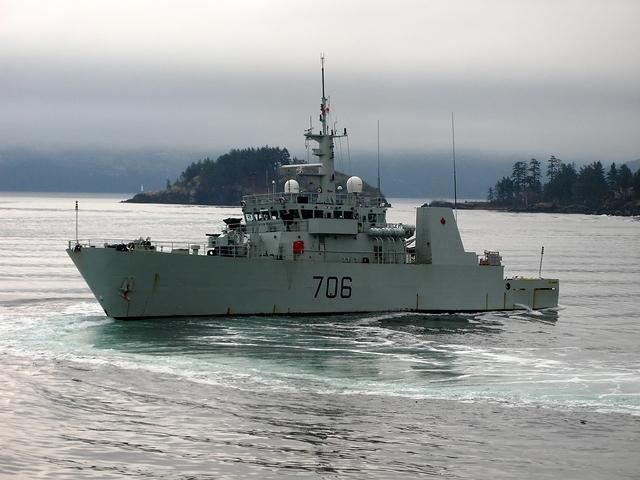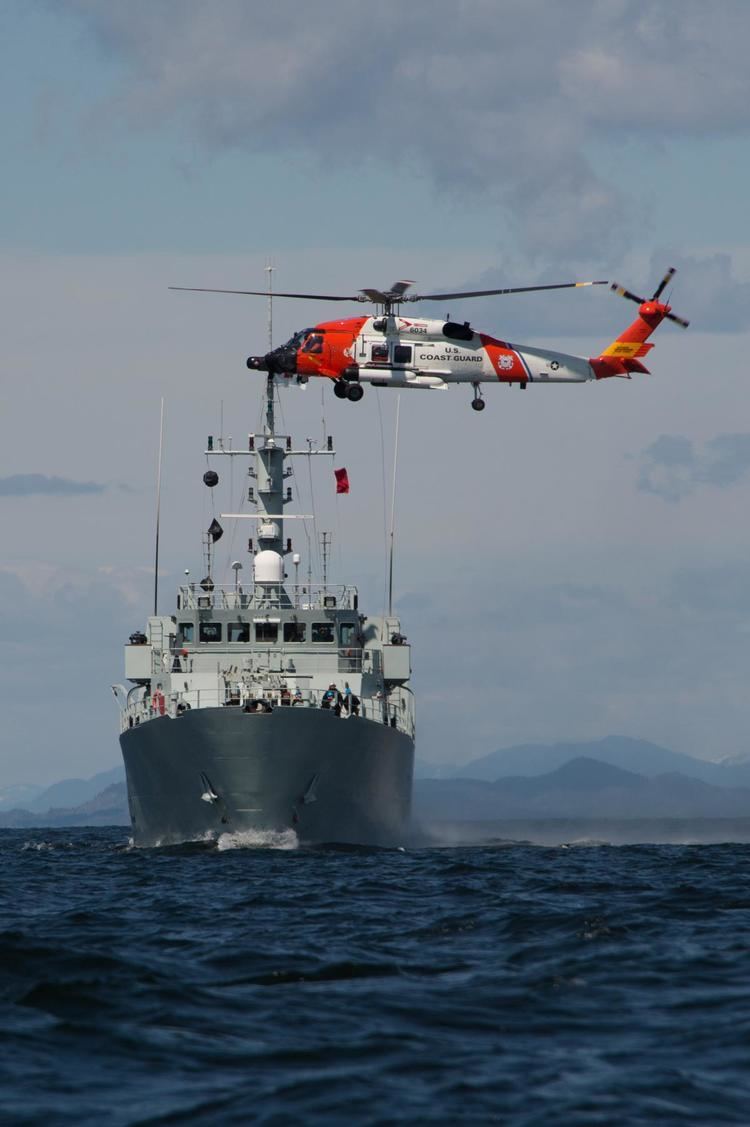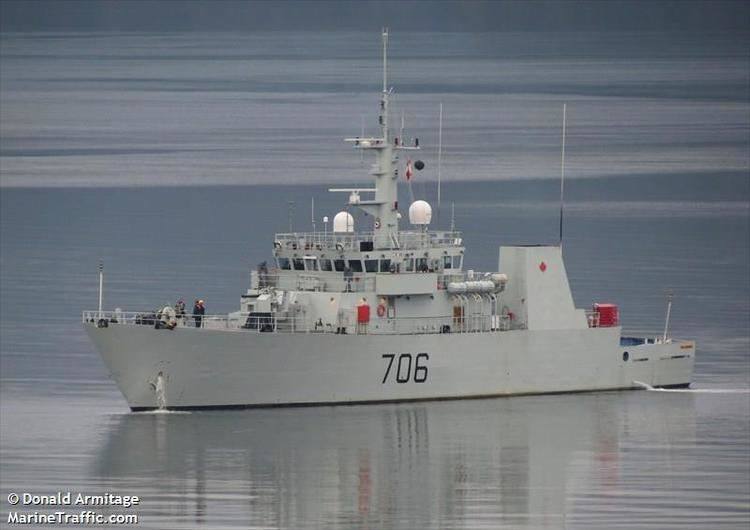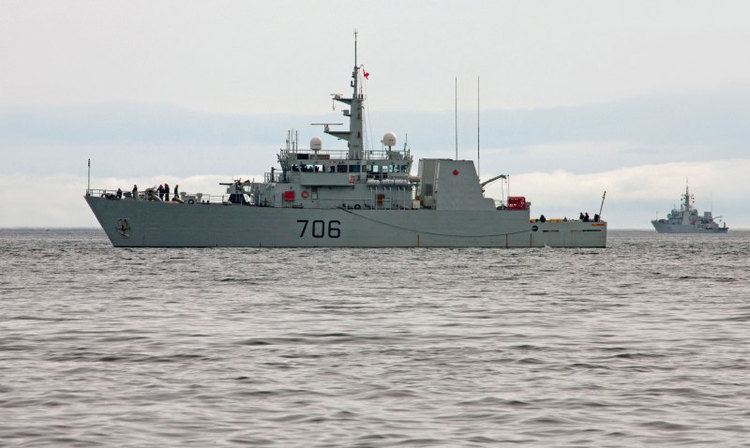Commissioned 18 April 1998 Identification MM 706 Launched 5 June 1997 Draft 3.4 m | Laid down 7 November 1996 Construction started 7 November 1996 Length 55 m Builder Halifax Shipyard | |
 | ||
Namesake Yellowknife, Northwest Territories | ||
canadian navy ship hmcs yellowknife 706
HMCS Yellowknife is a Kingston-class coastal defence vessel that has served in the Canadian Forces since 1998. Yellowknife is the seventh ship of her class which is the name for the Maritime Coastal Defence Vessel Project. She is the first vessel to use the designation Yellowknife in the Royal Canadian Navy. The coastal defence vessel is assigned to Maritime Forces Pacific (MARPAC) and is homeported at CFB Esquimalt.
Contents
- canadian navy ship hmcs yellowknife 706
- Hmcs yellowknife visits lund b c
- Design and description
- Service history
- References

Hmcs yellowknife visits lund b c
Design and description

The Kingston class was designed to fill the minesweeper, coastal patrol and reserve training needs of the Canadian Forces, replacing the Bay-class minesweepers, Porte-class gate vessels and Royal Canadian Mounted Police coastal launches in those roles. In order to perform these varied duties the Kingston-class vessels are designed to carry up to three 6.1-metre (20 ft) ISO containers with power hookups on the open deck aft in order to embark mission-specific payloads. The seven module types available for embarkation include four route survey, two mechanical minesweeping and one bottom inspection modules.

The Kingston class displace 970 long tons (990 t) and are 55.3 metres (181 ft 5 in) long overall with a beam 11.3 metres (37 ft 1 in) and a draught of 3.4 metres (11 ft 2 in). The coastal defence vessels are powered by four Jeumont ANR-53-50 alternators coupled to four Wärtsilä UD 23V12 diesel engines creating 7.2 megawatts (9,700 hp). Two LIPS Z-drive azimuth thrusters are driven by two Jeumont CI 560L motors creating 3,000 horsepower (2,200 kW) and the Z drives can be rotated 360°. This gives the ships a maximum speed of 15 knots (28 km/h; 17 mph) and a range of 5,000 nautical miles (9,300 km; 5,800 mi) at 8 knots (15 km/h; 9.2 mph).

The Kingston class is equipped with a Kelvin Hughes navigational radar using the I band and a Kelvin Hughes 6000 surface search radar scanning the E and F bands. The vessels carry an AN/SQS-511 towed side scan sonar for minesweeping and a Remote-control Mine Hunting System (RMHS). The vessels are equipped with one Bofors 40 mm/60 calibre Mk 5C gun and two M2 machine guns. The Kingston-class coastal defence vessels have a complement of 37.
Service history

Yellowknife' keel was laid down on 7 November 1996 by Halifax Shipyards Ltd. at Halifax, Nova Scotia and was launched on 5 June 1997. The coastal defence vessel transferred to the west coast in January 1998 and was commissioned into the Canadian Forces on 18 April 1998 at Esquimalt, British Columbia and carries the hull number MM 706.

Yellowknife, accompanied by frigates Winnipeg and Calgary and sister ship Brandon, departed in October 2014 to take part in San Francisco Fleet Week and the Task Group Exercise with the US Navy in American coastal waters. Following those exercises, Yellowknife and Brandon deployed as part of Operation Caribbe, completing their tour on 4 December. In June 2016, Calgary, Vancouver, Saskatoon and Yellowknife sailed from Esquimalt to participate in the RIMPAC naval exercise. After reports surfaced of a lost nuclear bomb was discovered off the coast of British Columbia, Yellowknife was sent to investigate and recover the item. Divers from Yellowknife determined the object was not the missing bomb.
